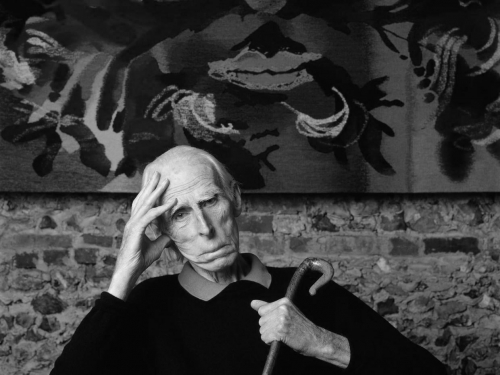The Art of John Piper, by David Fraser Jenkins and Hugh Fowler-Wright
foreword by Luke Piper (Unicorn and The Portland Gallery, £45.00)
John Piper is, I suspect, a name unfamiliar to many readers, but he is certainly among the finest artists of the 20th Century in these islands, and moreover one of the few artists of his time remarkable for his religious art.
This book combines aspects of a full length biography with a catalogue of the very varied aspects of his work over a long career. To many, perhaps inured by what passes as ‘great art’ these days, it will prove a rich revelation. For anyone who already admires John Piper it will be the necessary purchase of the season.
Worship
Piper was a High Anglican, but one who spoke rarely of his beliefs. He remarked that an artist who spent much of his time exploring places of worship and prayer, from medieval cathedrals to Welsh chapels, could be assumed to have deep religious beliefs of some kind.
I first encountered his work in John Betjeman’s First and Last Loves (1954), a collection of literary and architectural essays, as the illustrator. His images of Welsh chapels were collages made from cut-outs of sheet music improved by ink and wash. They recalled Piper’s earlier years as an abstract artist. His long association with Betjeman in writing the pre-war Shell Guides, a series remarkable for the style of the writing, layout, and images, gave his art a topographical focus.
But it was the war that saw the emergence of Piper. He was selected by Kenneth Clarke as a sort of home-front war artist. He drew images of Windsor Castle and others places endangered by German bombing raids. These images of the ruin, or potential ruin, of civilisation spoke richly of what many thought they were fighting for.
Coventry Cathedral was one of the great buildings destroyed by bombing. The decision was made to rebuild according to the designs of Basil Spence, and Piper, along with Graham Sutherland, was one of the artists asked to provide art and stained glass for the interior.
Piper’s windows again reverted, in a way, to his abstract roots, and were among the most effective elements of that great creation. Such windows are what many would consider ‘religious art’. But then articles that many think of as religious art are merely aids to piety; some are not even art.
Piper was one of those artists, going back to Samuel Palmer and others, who in their landscapes achieved something else. They explored through their landscape paintings the imminance of the transcendent revealed through creation.
Piper’s drawings, watercolours, and paintings of scenes and sights, though they seem to some to merely recall an outdated picturesqueness, were a vital expression of the lingering insights of the original Romantics through the British Neo-Romantic movement of the 1940s and 50s. They affect the imagination in a very profound way.
There is nothing like them in Irish art. For though some Irish artists profess to be religious artists, and many, such as Paul Henry, produced popular scenes of Irish landscapes, there is nothing of the profound sense of wonder that is to be found in Piper. In comparison with Piper many Irish artists are shown up as merely provincial.
Aspects
Here I can only mention some aspects of Piper that interest me. But this is a very full and detailed book, in which every stage of his career is chronicled. One small lacunae though: his visits to Ireland, at the urging of John Betjeman when he was an attaché here during the Emergency (“a sort of spy”, according the poet), are mentioned, the images he created are not shown. This is a pity. Yet nevertheless in The Art of John Piper are to be found visual riches beyond delight.


 Peter Costello
Peter Costello
